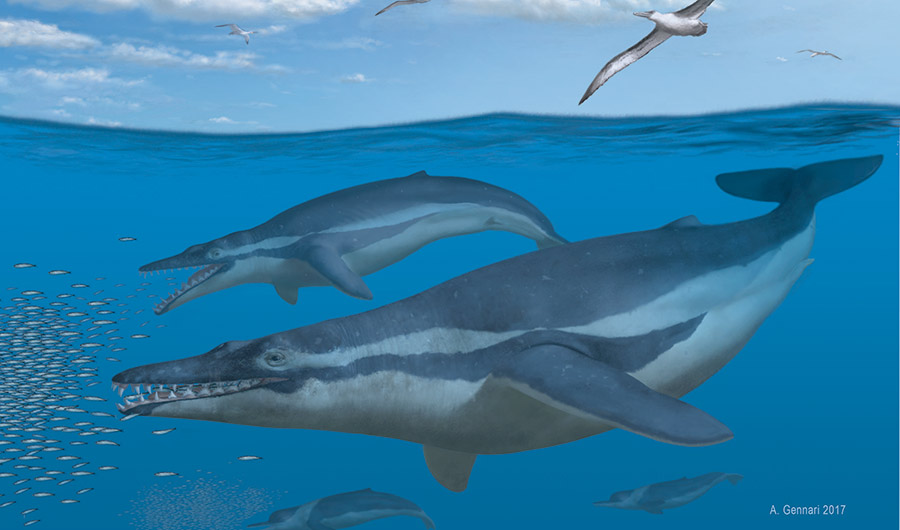BRIEF: Ancient Whales Used Teeth to Filter-Feed

The two main whales in the center of this artist's reconstruction are Coronodon havensteini, the lower two in the background are Echovenator sandersi
Alberto Gennari
(Inside Science) -- How did blue whales and humpback whales get their baleen? The baleen whale family, also known as the mysticetes, is named after the comb-like keratinous plates that trap small prey in the whales' cavernous mouths. Researchers believe an ancient whale species may help explain the origin of these oral sieves.
Before whales had baleen, they sported teeth. One camp of marine biologists suggests that in between using those two feeding systems, mysticetes evolved to be toothless suction-feeders, swallowing prey and ocean water together. Another group thinks these whales filter-fed using their teeth, which were then gradually replaced by baleen.
A study released today in Current Biology claims that an extinct toothed mysticete called Coronodon havensteini provides evolutionary clues that support the latter hypothesis. The paper’s lead author Jonathan Geisler, an anatomy professor at the New York Institute of Technology in Old Westbury, studied the 30-million-year-old whale’s peculiar fossils, found in South Carolina’s Wando River. He and his colleagues believe the whale represents a transitional step between modern mysticetes and their archaeocetes ancestors.
The researchers don’t think the Coronodon whale was an effective biter. While archaeocetes had narrow snouts that allowed for quick predatory movement, Coronodon had a wider face. It also had more rounded teeth than its ancestors, limiting its ability to puncture prey.
Instead, Coronodon’s fossils suggest that the whale was better suited for filter-feeding. For example, the whale’s dental alignment formed narrow gaps in between its teeth, creating perfect sea critter-sieves not found in toothed mysticetes relatives.
The researchers also looked in between Coronodon’s teeth, and found that the outer crown-like cusps lining each tooth had experienced some wear, a feature likely explained by filter-feeding.
Geisler and his coauthors claim that Coronodon may represent a pivotal turning point in mysticete evolution, where a whale’s gulp became more dangerous than its bite.

